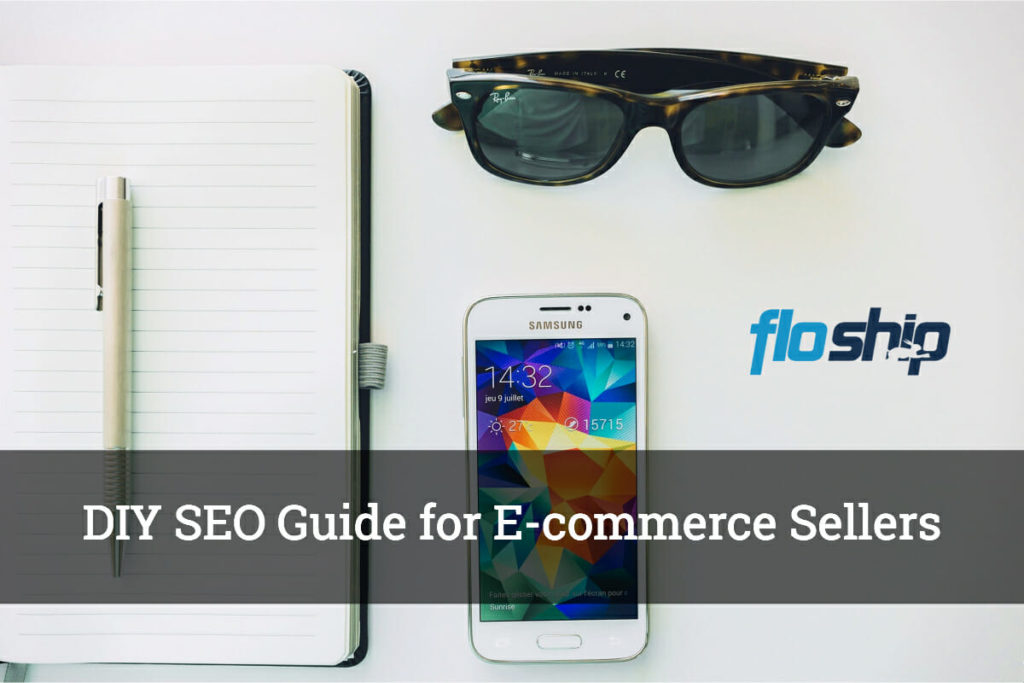For serious success with an eCommerce website, you need to be thinking about Search Engine Optimization (SEO).
And if there’s a little devil sitting on your shoulder telling you it doesn’t make any difference, let us be the one to swat that guy away and tell you that an online store needs as much love and SEO care as any other website.
The tricky part is that what works for every other kind of website on the planet, may not be the best approach for eCommerce. These are beasts of a different color. Here’s how to tame them with targeted on-page SEO.
Research the Competition
If you’re as clueless as Mr. Bean about how to go about SEO tweaks for your eCommerce website, we’re here to tell you there’s a great way to start.

Check out your competitors! Any website or individual pages in your industry that rank high on Google are fair game. What you need to find out are what keywords they’re targeting on the front page and with individual best-selling products.
Software like the Moz browser extension or SEMrush are great ways to do this research, though can be pricey. Google Keyword Planner is a free, though time consuming alternative.
The bottom line – figure out what keywords work for others.
Critical Homepage SEO Elements
In your rush to optimize an entire website, don’t forget to focus time and energy on your eCommerce site’s homepage. Here are things not to miss:
Title tag:
VERY important! Should include your business name and main keyword phrase you want to hit. Keep it under 70 characters.
Meta description:
Create a reader-friendly description of the business in 160 characters or less. Make it appealing!
Homepage content:
Create introductory content that is concise and clear. The goal is to educate visitors about what you do in a way that keeps them reading.
Site Organization
A rule of thumb for good site design is that anything should be reachable in three clicks.

For eCommerce, shoot for going from your homepage to product categories to individual products. This is not only for the sake of your human visitors but also search engine robots who follow internal links in their endless task of generating search results.
If any product on your website takes more than three clicks to reach, you need to re-think the architecture, because it might well not exist to Google. Being invisible to Google is not a good thing.
Optimize Product Pages
For an eCommerce site (obviously), products are everything. Here’s how to make sure they have proper SEO:
* Product name:
Insert the product name in the page title and URL. For example, if you sell ninja weapons, include the something like “www.mystore.com/ninjathrowingstar” in the URL. See what we did there?
* Product description:
Like with the homepage, Google will take the individual product’s meta description and put it in the search results. Make it appealing and include a selling point in the first sentence if possible.
* Images:
An eCommerce store’s entire fate might ride on product image quality, but there are SEO features to include also. The big thing here is to create a descriptive file name. It shouldn’t be image001234.jpg. Work in the product name and a keyword.
* Good Google Juice:
Stay away from the “how long can you go” priced hosting plans out there. Part of successfully playing the SEO game is to not let your website be associated with others of – shall we say – a questionable nature. You better believe Google will penalize these bad eggs and you in the process. Although it might seem a bit tedious, taking the time and effort to research quality hosts will end up saving you a ton of money in the future.
Video, Video, Video
Have you heard of a little website that ranks right behind Google for amount of global traffic?

Yep, it’s YouTube. The bottom line is people love video and including a short explanatory video on each product page could explode sales. Better yet, it stands out from written content in search results.
Want a weird, useless fact? People upload 300 hours worth of video to YouTube every minute. We call that mind-boggling.
Speaking of YouTube, it’s an incredible marketing opportunity to create your own channel and post videos to it. Flex your creative muscles and who knows what sort of traction you might gain?
To re-emphasize how big and inclusive YouTube is, there are 3.25 billion hours of video watched on this website each month.
Reviews
For online stores, customer reviews are social proof of products, both good and bad.
Some eCommerce software allows a store owner to prohibit reviews. For our money, that’s a bad idea. If you’re taking care of business the right way, the majority should be good reviews.
The funny thing is bad reviews aren’t necessarily a bad thing, because they seem more reflective of reality. Not everyone will leave your website happy, no matter how hard you try to please them. Some people are just grumps.
You have much to gain by allowing reviews.
Frequently Asked Questions
It might be a hassle to create a quality FAQ page on the front-end, but think of it like this.
You get to answer a question once, in writing, then have that answer do the work from then on. It’s not a perfect system, but it should cut down on the time and energy cost to you of answering the same simple questions over and over.

There’s no way to avoid the fact that customers will have questions. If they can’t find an answer quickly and easily, they’ll go elsewhere. That ought to be all the motivation you need to create a quality FAQ page.
In addition to a general FAQ page that answers questions about returns, shipping, etc, you should have a product specific version along with each product. Once again, effort exerted up front lets you avoid repeating it down the road.
Final Thoughts
Obviously, this guide is the small tip of a very large iceberg when it comes to proper SEO of an eCommerce website.
Still, if you take the time to understand and implement each one of these suggestions, you’re going to be far ahead of the pack of lazies who think all you have to do is throw up some products and people will buy them.
If only it were that easy. Develop good SEO habits of tweaking each product page as soon as you add it. You’ll get busy and forget. That’s money lost.

Gary Stevens is a writer and blogger. He helps small businesses with online security and website setup. He’s also a blockchain enthusiast.

Ready To Upgrade Your Logistic Solution?
Speak to Floship ecommerce logistic consultant about improving your global support chain today





